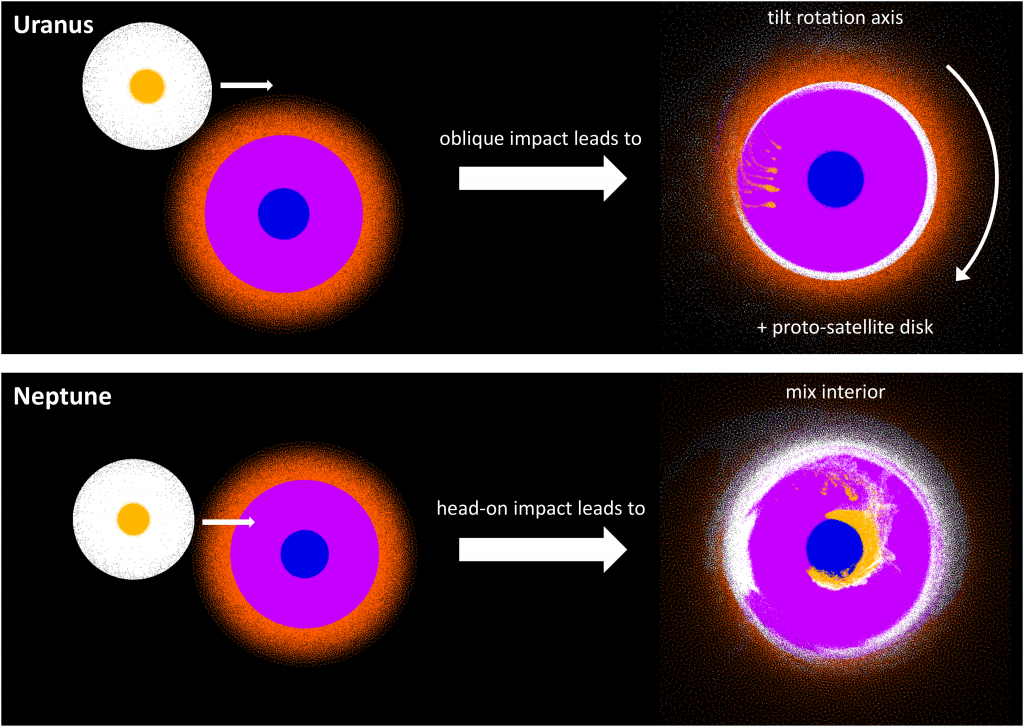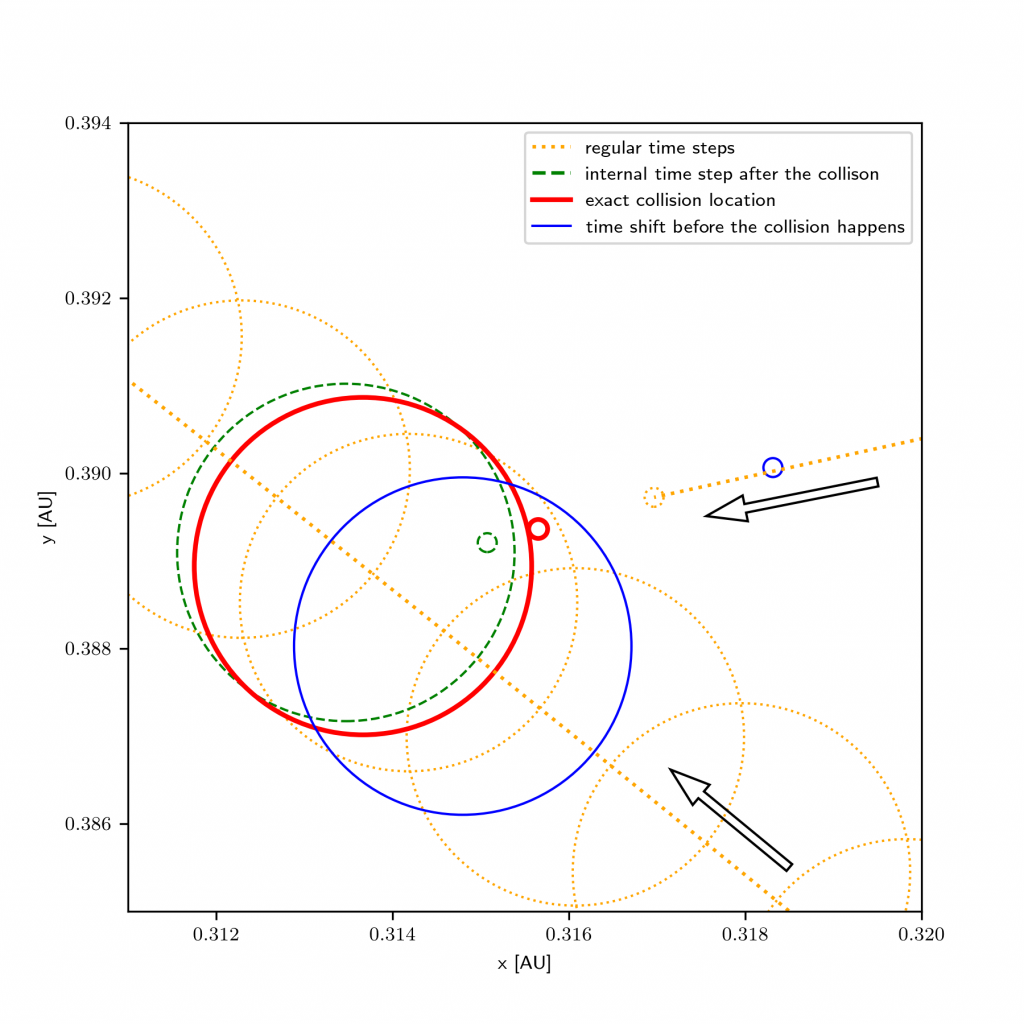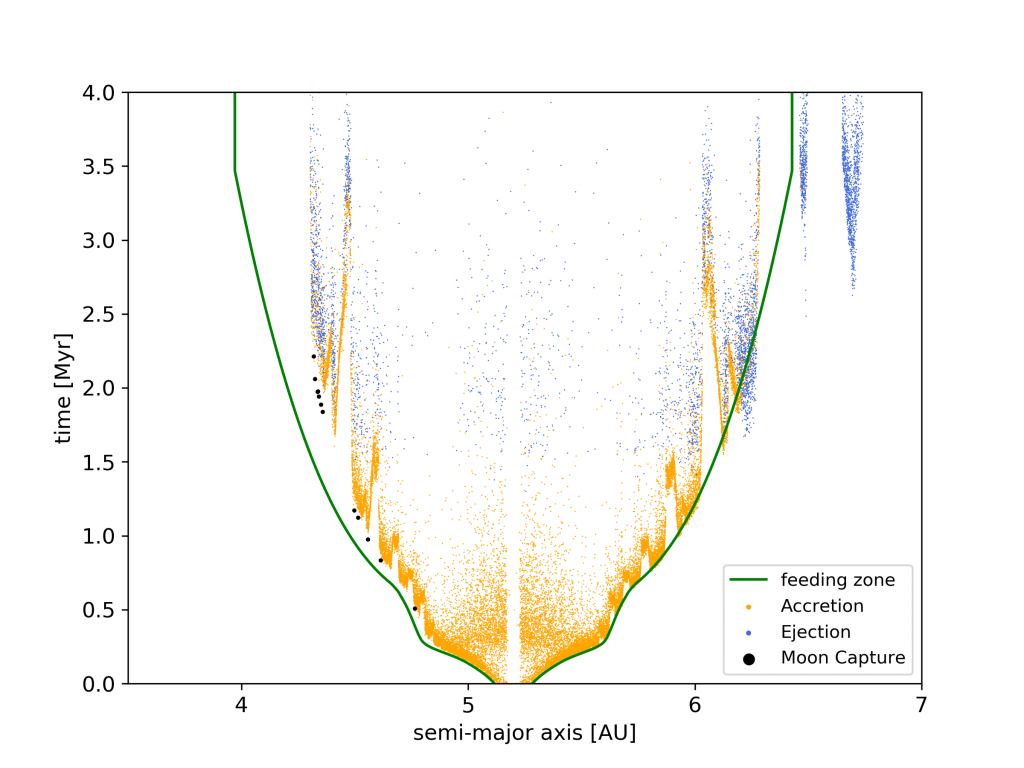Project 2.6: Collisional growth and orbital evolution of planets

In the late stages of planet formation, pairwise collisions between bodies are the fundamental agent of planet growth and disruption. However, despite their importance, they are still generally treated as simple merger events. Semi-analytic methods have been developed to improve how collisions are handled (e.g., inside N-body simulations), however these methods are restricted to a narrow set of parameters and achieve poor accuracies. In order to overcome these limitations, we have developed a robust and flexible emulation framework, drawing on techniques from machine learning (neural networks and XGBoost) and uncertainty quantification (Gaussian processes and polynomial chaos expansion). In order to train these models, we simulated a new dataset of 10,700 pairwise collisions between differentiated, rotating bodies. This dataset is more than an order of magnitude larger than the next largest collision dataset (N=800) and includes effects not accounted for in previous work—most importantly rotation and variable core mass fractions. It is also the best sampled dataset to date, constructed as a Latin hypercube sample. We have just submitted a paper comparing the regression performances, dataset requirements, benefits of these methods to “Computational Astrophysics & Cosmology”. In a follow-up paper (in prep), we further develop our emulation methods to achieve physical self-consistency and integration into existing N-body codes (e.g., Genga). Further work remains to be done on simulating new regions of collision space (e.g., lower masses) and implementing new equations of state into Gasoline.

Bifurcation in the history of Uranus and Neptune: the role of giant impacts
Uranus and Neptune are the outermost planets of the Solar system. Both in mass (and heavy element content) and average distance from the Sun they are very similar and clearly segregated from the inner terrestrial planets and gas giants. Despite several decades of research there are still many open questions regarding their formation, composition and internal structure. It is often assumed that they formed in a similar way. This would readily explain their very similar masses, mean orbital separation from the Sun and possibly composition. However, there are also striking differences between the two planets that require explanation. For example Uranus and its major satellites are tilted about 97 degrees into the Solar plane and effectively rotates retrograde with respect to the Sun. Also the satellite systems are different. Uranus’ major satellites are on regular orbits (and tilted with the planet) which suggests that they formed from a disk, similar to Earth’s Moon while Triton, Neptune’s largest satellite, is very inclined and therefore most likely a captured object. Also their interiors could be very different: Uranus’ seems very cold and is more centrally condensed compared to Neptune. Since impacts are common during the formation and early evolution of planetary systems a giant impact was proposed as the origin of this dichotomy. Prior work either only investigated impacts on Uranus or was limited due to strong simplifications in the impact calculations.
For the first time we investigate a range of different collisions on both planets using high resolution computer simulations. Starting with very similar pre-impact Uranus and Neptune we show that an impact of 1-3 Earth masses on both planets can explain this dichotomy. In the case of Uranus a grazing collision can tilt the planet but does not affect the planet’s interior. On the other hand, a head-on collision for Neptune strongly affects the interior but does not form a disk, and is therefore consistent with the absence of large moons on regular orbits. Such a collision, which remixes the deep interior, is supported by the larger observed heat flux of Neptune. We clearly show that an initially similar formation pathway to Uranus and Neptune can result in the dichotomy observed in the properties of these fascinating outer planets. Future NASA and ESA missions to Uranus and Neptune can provide key new constraints on such a scenario and improve our understanding of the formation of the Solar System and provide a better understanding of exo-planets in this mass regime.

Performance (Multi-level change-over functions)
General Relativity
Yarkovsky Effect
Poynting-Robertson Drag
Tidal Forces and Rotation Induced Deformation
More precise handling of collisions.


